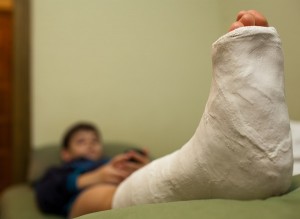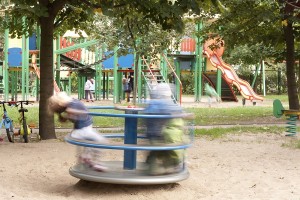Children are typically naturally active human beings with growing bones that often become susceptible to breaks, bruises, fractures and cuts. Their small, yet sometimes fearless attitudes may cause them to try new and adventurous activities without thinking about the possible repercussions. As a parent, it is often difficult to predict what your child is going to do next. While this job requires you to be on call 24 hours a day, 7 days a week, there are times when accidents happen, despite your very best efforts. During these times, your child may take a fall or tumble, and end up getting hurt.
Playgrounds are supposed to keep children entertained, active and somewhat safe. However, close to 20,000 kids are sent to the emergency room each year in the United States after having an accident on the playground. These visits are the result of fractures, internal injuries, concussions, dislocations and other injuries.
As a caregiver you simply cannot observe every moment of your child’s life. That is why it is important to notice signs and symptoms of fractures in children. A partial or complete break in one’s bone can produce growth problems in the future, as well as large amounts of pain. Knowing the symptoms of a pediatric fracture will help your child receive the best care after an accident or injury.
Pediatric Fractures: Why Are Children More Prone To Certain Injuries?
The reason children are more susceptible to many types of fractures (greenstick, buckle, growth plate, stress, non-displaced and displaced fractures) is because of the way their bones are developing. Children have growing, flexible bones. However, because of their supple bones, they are often at greater risk for unique fractures that involve bending and buckling.
Fortunately, children tend to heal quickly, and compared to adults, their bones are easier to mend. But they are at a disadvantage when it comes to growth plate injuries. This area on the end of their long bones can become damaged and create length discrepancies and deformities in their adult years.
Common Symptoms of Pediatric Fractures or Broken Bones in Children
As a parent, you can help keep your children safe and growing by recognizing some of the symptoms children show after sustaining a fracture or breaking a bone. There are some obvious physical signs to acknowledge. These include: swelling, redness, warmth, bruising, and a deformation to the affected area. If your child refuses to use the affected limb, this is often an indicator that an injury has occurred.
 If you suspect your child to have sustained a serious injury or fracture, always seek help from a qualified physician. A board-certified orthopedic physician will conduct a physical exam to identify the injury and treatment options. Oftentimes in the case of a broken or fractured bone, your child will need to have x-rays taken to understand the type of break and to complete treatment.
If you suspect your child to have sustained a serious injury or fracture, always seek help from a qualified physician. A board-certified orthopedic physician will conduct a physical exam to identify the injury and treatment options. Oftentimes in the case of a broken or fractured bone, your child will need to have x-rays taken to understand the type of break and to complete treatment.
Dr. Grossfeld at Orthopaedic Specialists in Louisville, Kentucky, is well-qualified in this area and will treat any type of pediatric fracture. She is a double board-certified orthopedic surgeon and sports medicine physician. And she’s been identified as one of the top 10 orthopedic doctors in the Louisville-area. For more information about Orthopaedic Specialists, or to make an appointment, call 502-212-2663 today.

Recent Comments